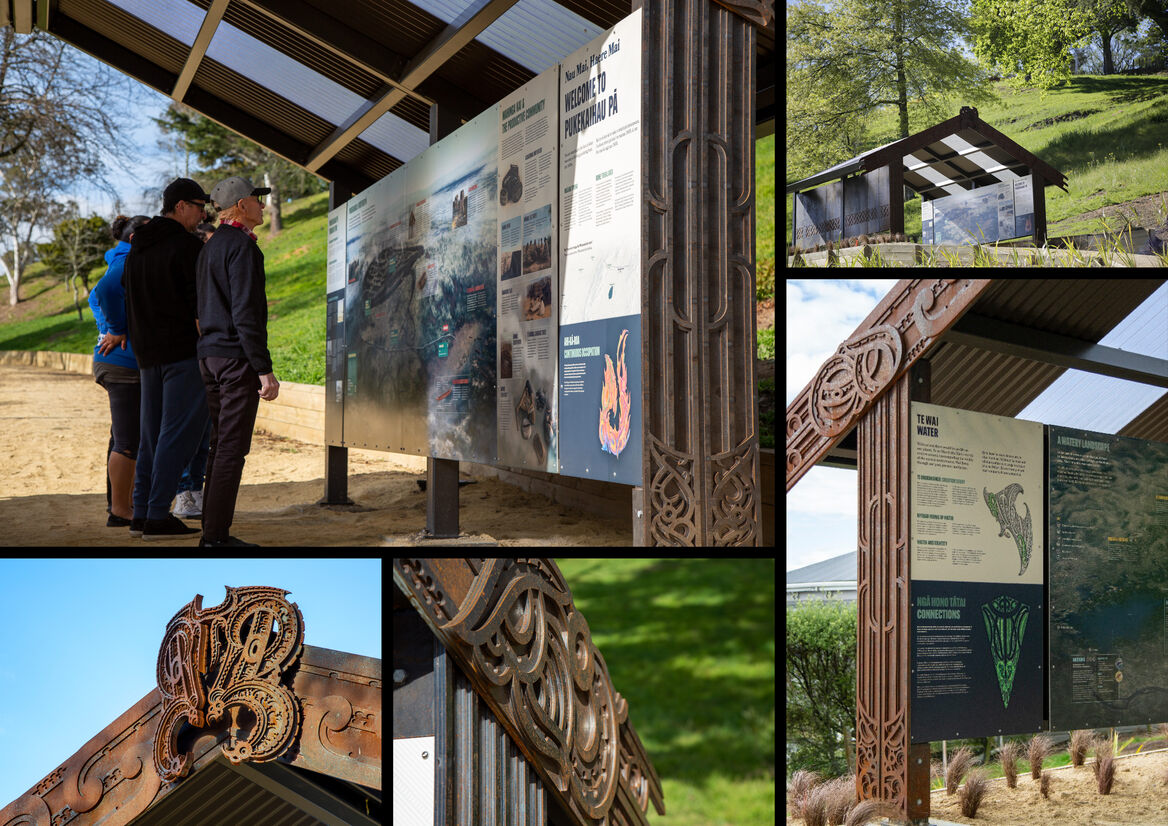Graphic
Locales 26 Ngā Ara Tipuna
-
Pou Auaha / Creative Director
Chris Hay
-
Ringatoi Matua / Design Director
Leigh Bardsley
-
Ngā Kaimahi / Team Members
Lucas Bullmore, Ellen Pullar, Rebekah Lillie -
Kaitautoko / Contributors
Anderson Design, Conrad Nepe Apatu, Brian Morris -
Client
Central Hawke's Bay District Council/Te Taiwhenua o Tamatea










Description:
Ngā Ara Tipuna was initiated by mana whenua of the Waipukurau-Takapau rohe, who wished to make their authentic histories of this place visible on the land. The project, realised in partnership with Central Hawke’s Bay District Council, needed to cater to the needs of four very different audiences: mana whenua, local residents, education groups, and visitors to the area.
The key objective was to provide a counterpoint to existing Eurocentric histories of Waipukurau-Takapau. This would allow mana whenua to celebrate their stories and pass them on to the younger generation. It would also awaken locals, visitors and education groups to the fascinating histories that are obscured by the contemporary built environment of the towns.
Informed by focus groups with hapū representatives, residents, teachers, highschool students, and prospective visitors, we devised an interconnected suite of installations. This included: interpretive and wayfinding signage, sculptural structures, whakairo (carvings) and other artwork, as well as digital media. These invite visitors and locals to go back in time 400 years, and look at the landscape through a different lens.
We codesigned Ngā Ara Tipuna with representatives from Rākautātahi Marae. They chose to showcase the site of Pukekaihau Pā (now Hunter Memorial Park, in central Waipukurau) and seven other pā and wetland sites across the rohe.
Pukekaihau Pā thrived from the 1600s until the 1830s. Below the hilltop pā, on what was once a landing place for arriving waka but is today drained land, we installed a whare kōrero. Steelcut with whakairo by local carvers, this structure welcomes visitors. Inside, two large illustrated recreations show what Pukekaihau Pā and the wider rohe might have looked like during the times of the tīpuna – when this was a more watery landscape. Up the hill we positioned palisades of local kānuka, to evoke the pā tuwatawata (fortified pā) that once stood at the summit.
Two lookouts on the hillside interpret the landscapes they overlook and how these have changed since the tīpuna lived here, through illustrated panels. They provide insights on the pā sites, mahinga kai (food stores/gathering places), waterways and forests that once covered this area. At the tihi is a large, contemporary pou, co-designed with local artists and the agency. It represents peace and is named Te Hohou I Te Rongo.
Oral history pou at Pukekaihau Pā and the seven other sites mark these as places of importance. They feature interpretive text and whakairo. Cut-out viewing windows direct visitors’ attention to traces of the past that are still visible on the landscape – such as significant mountain peaks and archeological features. The pou are also wayfinding devices, displaying maps to help visitors follow a self-guided tour of the sites. QR codes invite them to learn more about these places using the bilingual mobile phone tour.
To make all installations accessible to our key audiences, we situated them within a short distance from road accessways. We also constructed seating and parking areas nearby.
We took prototypes of the signage and structures onto the landscape, then refined them several times. This allowed us to ensure that the recreated landscape illustrations and viewing windows lined up accurately with the contemporary viewshafts the signage faced.